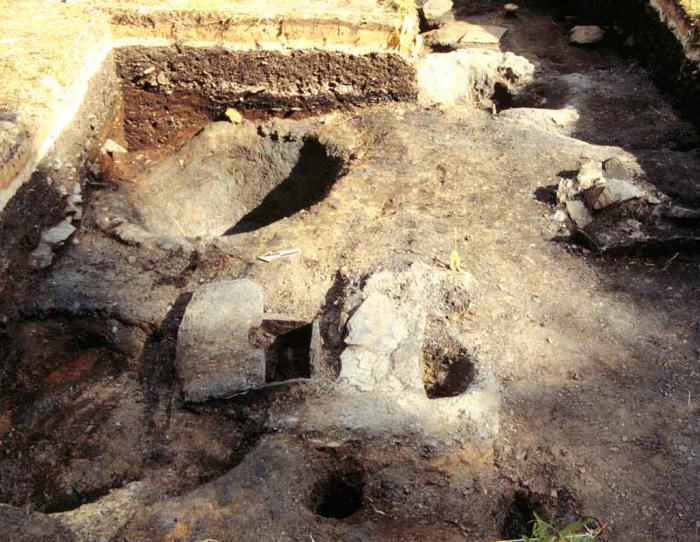Oven — Tug'awik

For many thousands of years, people around the world have used holes in the ground for cooking. From the Hawaiian pig roast to the New England clam bake, earth ovens provide an excellent place to cook many types of foods, and they are easy to build. Line a hole with some rocks. Add a pile of burning embers and top them with more rocks. Place your food on the rocks, cover it with some leaves or grass, and then bury everything with dirt. The heat generated by the coals will be stored in the rocks, gradually cooking your food. People often prepare meat in earth ovens, as the slow, sealed, cooking process creates a tender, juicy roast.
Among the Alutiiq people, pit cooking appears to be thousands of years old. In ancient settlements, archaeologists find pits of all sizes that have layers of rock and wood charcoal. Some pits may have been for cooking food, others for drying foods over a slow-burning fire. Pit cooking is especially common after about 800 years ago, the time when people began living in large, multi-family houses and hosting large gatherings. This technique allowed people to make quantities of food to feed extended families and hungry visitors.
Alutiiq roasting pits were up to about two meters (six feet) across, with sloped sides. Most have gravel or burned rocks inside, and some had a lining. On the shore of Afognak Bay, people applied a thick layer of glacial clay to the sides of some pits, forming a barrier between the wet soil and the cooking feature. Sometimes the pits have a layer of dirt or a clay cover, suggesting their contents were covered for cooking. Others have post holes around the edges, suggesting that people hung food over the pit to roast it.
